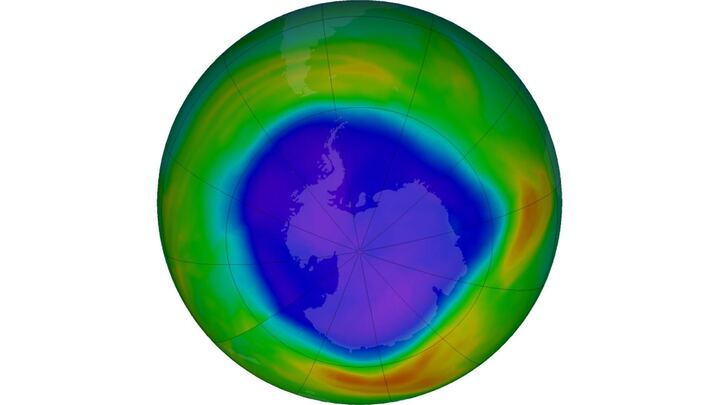The ozone hole above Antarctica has grown to three times the size of Brazil
It's one of the biggest ozone holes on record — but not necessarily cause for alarm.

Just as the sea ice around Antarctica grows and retreats each year, so does the ozone hole above the continent. And this year, that hole has grown a lot.
Observations from the European Space Agency's (ESA) Copernicus Sentinel-5P satellite indicate the ozone hole reached approximately 10 million square miles (26 million square kilometers) in area on Sept. 16, 2023 — making it one of the largest seasonal holes ever observed. The true largest ozone hole maximum occurred in 2000, when the chasm reached nearly 11 million square miles (28.4 million square kilometers) in area.
Ozone is a naturally occurring gas, and there's a layer of it in the stratosphere that protects us from the sun's ultraviolet, or UV, rays. In 1985, a hole in the ozone layer was discovered above Antarctica — and later connected to human use of carbon-depleting substances. Since then, we've banned the use of those substances and have been monitoring the hole's size.
The ozone hole still grows and shrinks seasonally, however, due to temperature changes and wind conditions in the stratosphere, reaching a maximum between mid-September and mid-October. "Our operational ozone monitoring and forecasting service shows that the 2023 ozone hole got off to an early start and has grown rapidly since mid-August," Antje Inness, Copernicus Atmosphere Monitoring Service senior scientist, said in a statement.
One possible reason for the higher-than-normal growth is the Hunga Tonga volcanic eruption in January 2022, which introduced massive quantities of water vapor into the air. “The water vapor could have led to the heightened formation of polar stratospheric clouds, where chlorofluorocarbons (CFCs) can react and accelerate ozone depletion," said Inness.
Yet despite experiencing large seasonal growth this year, the ozone hole is still decreasing in size overall. "Based on the Montreal Protocol and the decrease of anthropogenic ozone-depleting substances, scientists currently predict that the global ozone layer will reach its normal state again by around 2050," said Claus Zehner, ESA's mission manager for Copernicus Sentinel-5P.
Get the Space.com Newsletter
Breaking space news, the latest updates on rocket launches, skywatching events and more!
Join our Space Forums to keep talking space on the latest missions, night sky and more! And if you have a news tip, correction or comment, let us know at: community@space.com.

Space.com contributing writer Stefanie Waldek is a self-taught space nerd and aviation geek who is passionate about all things spaceflight and astronomy. With a background in travel and design journalism, as well as a Bachelor of Arts degree from New York University, she specializes in the budding space tourism industry and Earth-based astrotourism. In her free time, you can find her watching rocket launches or looking up at the stars, wondering what is out there. Learn more about her work at www.stefaniewaldek.com.









